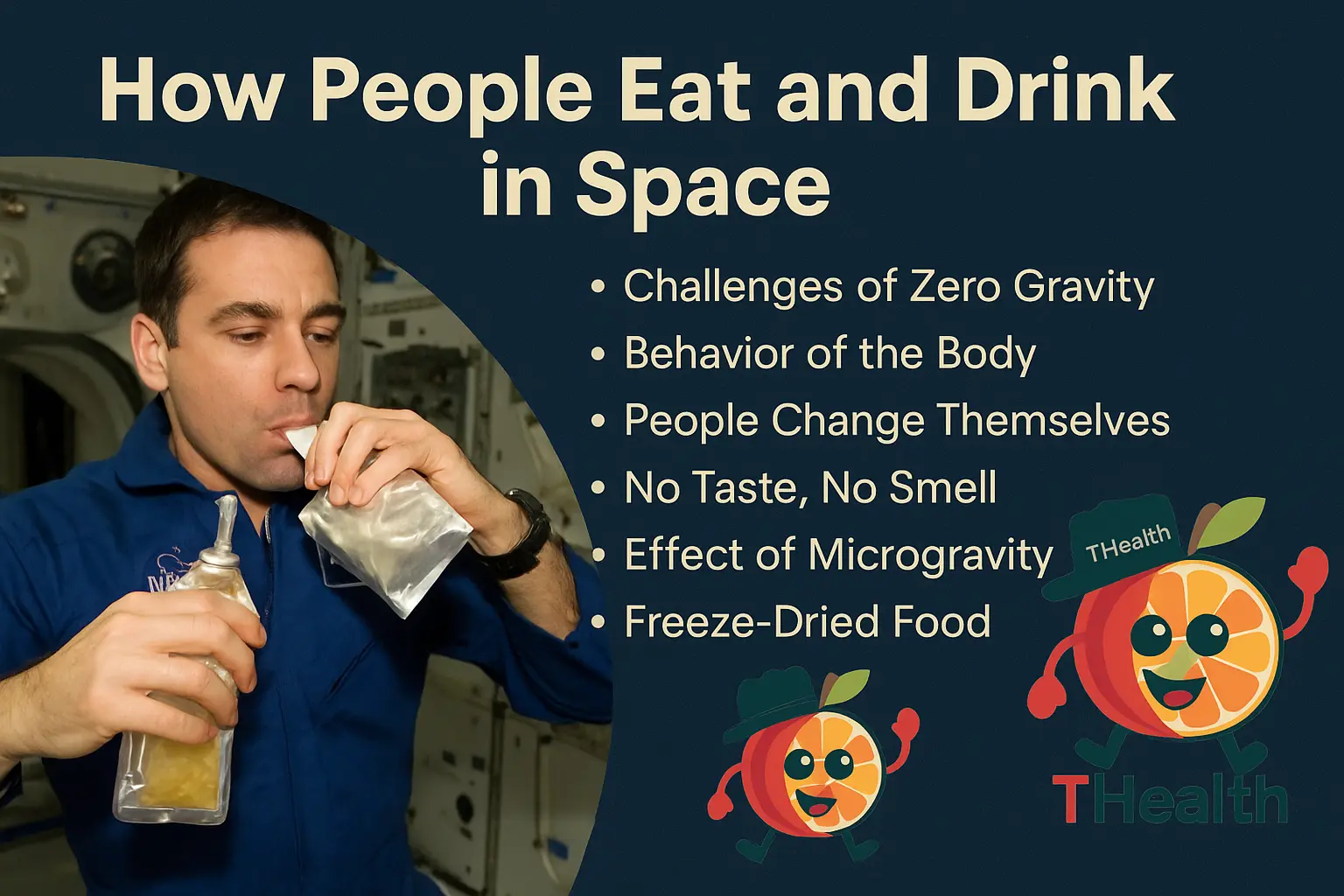Table of Contents
Sunita Williams’ space journey, which has been extended from eight days to eight months, has aroused curiosity in India about the food and living conditions of astronauts. The coming time is going to be of long space journeys. Any journey to Mars cannot be less than one and a half years. In such a situation, through this unplanned experience of Sunita Williams, we can get an idea of how people live in space, How Astronauts Eat and Drink in Space, and what kind of health problems they face.
Challenges of Zero Gravity
- In microgravity, that is, near zero, not only the behaviour of things but also the internal functioning of the body changes. Things do not stay at one place in the spacecraft. If they are not tied or glued, they start floating in the air on the slightest touch. They do not come down if they fall from the table or anywhere else. They start colliding here and there and become a lesson of risk. Two types of precautions need to be taken in food items. As far as possible, they should be light. Secondly, they should not contain bacteria, viruses or fungus because the risk of diseases increases when many people live in a small space.
Behavior of the Body
- The physical problems related to eating include the behavior of salivary glands, taste glands, alimentary canal – especially intestines and urinary system, which get disturbed in microgravity. The entire evolution of humans has happened while living on earth and its direction has been to adapt accordingly. Whether the tears of the eyes are inside or outside, their natural movement is to go from top to bottom. The body can tolerate a disruption of two to four days in this flow.
People Change Themselves
- But after living in a place for months where there is nothing like above or below, the internal behaviour of the body changes. Even after the rhythm of life is disturbed to such an extent, a person does not get exhausted and remains engaged in the research work assigned to him with full physical and mental capacity. For this, a lot of work has to be done at the level of supply from the earth and the people living there also change themselves a lot.
No Taste, No Smell
- The astronauts present in the space station tell about their health that they are constantly feeling like they have a cold. It is not a real cold because a lot of efforts are made to ensure that the cold virus does not reach the space station. Just like in a cold, the taste of the tongue disappears.
Effect of Microgravity
- Nothing smells good, eyes, mouth, ears, nose, everywhere there is a swelling inside, this is what one feels while living in microgravity. Apart from this problem, feeling hungry and having the urge to go to the washroom is exactly like on Earth. Despite spending months on the space station, microgravity does not have much effect on these basic things.
Freeze-Dried Food
- The world’s first astronaut, Yuri Gagarin of Russia, spent only 1 hour and 48 minutes in space, but while there he ate food from three aluminum tubes. Later, when the duration of space travel increased, he took freeze-dried food pieces along with the tubes. The principle of freeze-drying something is to cool it to minus 40 degrees, then heat it in a vacuum chamber so that all its water is removed. This makes the food very light, kills bacteria, and there is not much difference in taste or nutrition. All you have to do is hydrate them with hot water or steam before eating. Initially, hot water was not available for this, but now it is not a problem. As for beverages, they come in the form of powder and are made drinkable by mixing water. To drink water or any health drinks, one has to try a slightly different type of straw with a valve.
Space Food Laboratories
- Every country with ambitions of human space travel has food laboratories on that side, where work goes on to find out how to add new tasty and nutritious food or drinks to the astronauts’ menu. In India too, this is an important aspect of the preparations related to Gaganyaan.
Lower Body Exercises
- Some discussion should also be given to exercises and excretory techniques in space. There is always a risk of weakening of bones and even inability to perform essential functions on the space station. Therefore, a regular program of upper and especially lower body exercises has to be included in the daily routine of every astronaut. Excretory techniques have gradually reached perfection but minor accidents of spreading dirt in the station still occur occasionally.
